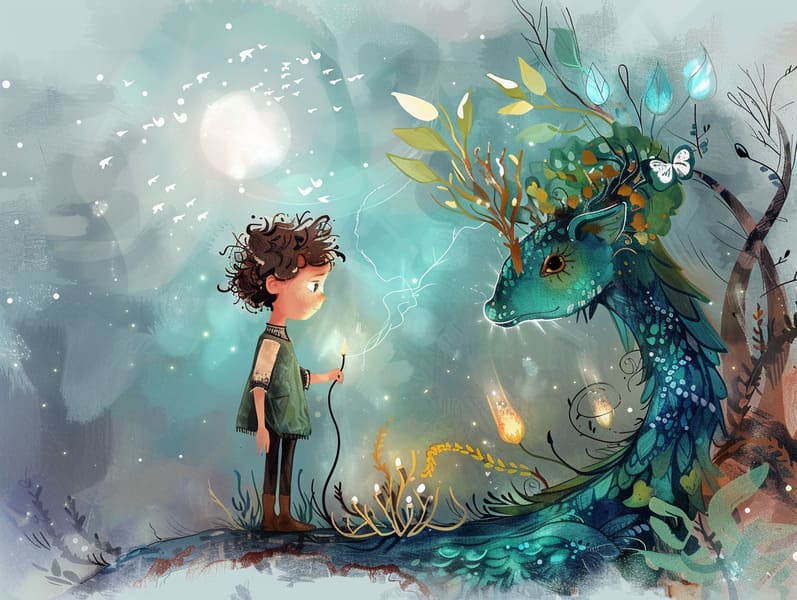The Creation of Short Fairy Tales and the Undying Attraction.
The Creation of Short Fairy Tales and the Undying Attraction.
Blog Article

Grimm's fairy tales have ancient roots. These narratives have been told from one generation to the next far before they were ever put on paper. They sprang from a variety of civilizations, including African traditions. They were initially conveyed among adults, often carrying themes and messages mirroring the societal norms and beliefs of the time.
The famous Grimm duo, Jacob and Wilhelm Grimm, were among the first to compile many of these beloved fairy tales. Their volume, "Grimm's Children's Stories," included classics like "The Story of Cinderella," "Hansel and Gretel," and "Snow White," which have since become pillars in the world of children's fairy tales. Similarly, Hans Christian Andersen's enchanting tales, such as "The Mermaid," and "The Little Duckling," have won hearts worldwide, solidifying their place in the pantheon of beloved fairy tales.
Despite their age, these tales remain as meaningful as ever, especially as children's night stories. These charming stories are now available in various formats, including colorful picture books, whimsical animations, and digital fairy tales.
Their enduring popularity can be credited to several delightful features:
Key Lessons: Ancient fairy tales often whisper important moral lessons. Narratives like "The Boy Who Cried Wolf" teach the significance of truthfulness, while "The Story of the Tortoise and the Hare" point out the qualities of resolve and meekness. These tales offer little ones clear distinctions between correct and incorrect, shaping their moral compass in a gentle yet significant way.
Empathy and Awareness: Fairy tales frequently feature heroes facing struggles and tests, motivating readers to sympathize with their struggles and encourage their triumphs. For instance, "Beauty and Her Beast" demonstrates the merit of seeing beyond the surface to see the true nature of a person, advancing insight and comprehension.
Cultural Understanding: Many timeless fairy tales are steeped in the cultural contexts from which they sprang. Delving into these narratives can provide illuminating insights into different societies, cultivating a sense of international awareness and comprehension.
Creativity and Imagination: The supernatural elements in classic fairy tales—enchanted objects—boost children’s visions. These fairy tales transport readers to fantasy realms, fostering fantasy-filled thoughts and a sense of marvel that persists a lifetime.
Ancient fairy tales are not only alluring but also informative. They work as bewitching tools in enhancing various mental and emotional abilities in young readers. When traditional fairy tales are spoken, they nurture communication skills by showing new linguistic elements and sophisticated sentence structures. This practice also develops listening abilities and mental focus, as young readers track the narrative, anxious to see what happens next.
Furthermore, contemplating the themes and characters of ancient fairy tales can advance intellectual skills and cognitive skills. The young are taught to discern patterns, anticipate outcomes, and get cause and effect. These explorations also boost little ones articulate their thoughts and feelings, cultivating their emotional intelligence.
In today’s information age, the accessibility of web-based fairy tales has made these narratives more accessible than ever. Online platforms and web apps give wide arrays of Grimm's fairy tales that can be perused or listened via anytime, anywhere. Fairy tales narrated are particularly well-liked, presenting an charming way for kids to enjoy these entrancing tales. Audiobooks and narrated videos guide characters and settings to life, often accompanied by mesmerizing sound effects and melodies that improve the tale-telling adventure.
The persistent attraction of ancient fairy tales lies check here in their ability to transform to present days while holding onto their key morals. Contemporary renditions of these fairy tales often incorporate more inclusive characters and modern settings, making them relevant to today’s audience. However, the basic principles of bravery, charity, and lawfulness remain unchanged, continuing to influence readers of all ages.
Old fairy tales also offer a sense of comfort and knownness. They yield a neat narrative with a transparent beginning, middle, and end, often closing with the culmination of conflicts and the triumph of morality over immorality. This assuredness can be reassuring for kids, offering a sense of unchangeability in an inconstant world.
Ancient fairy tales continue to fascinate and inform new generations, maintaining their wonder and applicability in modern society. As kids' bedtime tales, they feature a perfect blend of enchantment and education, supporting moral values, empathy, and creativity. The proliferation of web-based fairy tales and the commonness of fairy tales told out loud warrant that these ancient tales remain acquirable to new generations.
By continuing and spreading these fairy tales, we continue to honor the rich tapestry of fantasy and cultural heritage. Whether you are exploring a richly illustrated book, accessing a digital library, or hearing an spoken story, the captivation of popular fairy tales is always within reach. These stories show us of the unchanging magic of tales and its ability to connect us across generations and cultures.
Regardless if you are delving into a vividly illustrated book, browsing a web collection, or listening through an voice book, the appeal of ancient fairy tales is always within reach.
These narratives highlight of the unceasing ability of stories and its ability to gather us across centuries and lands, creating a bond that delights and instructs alike.